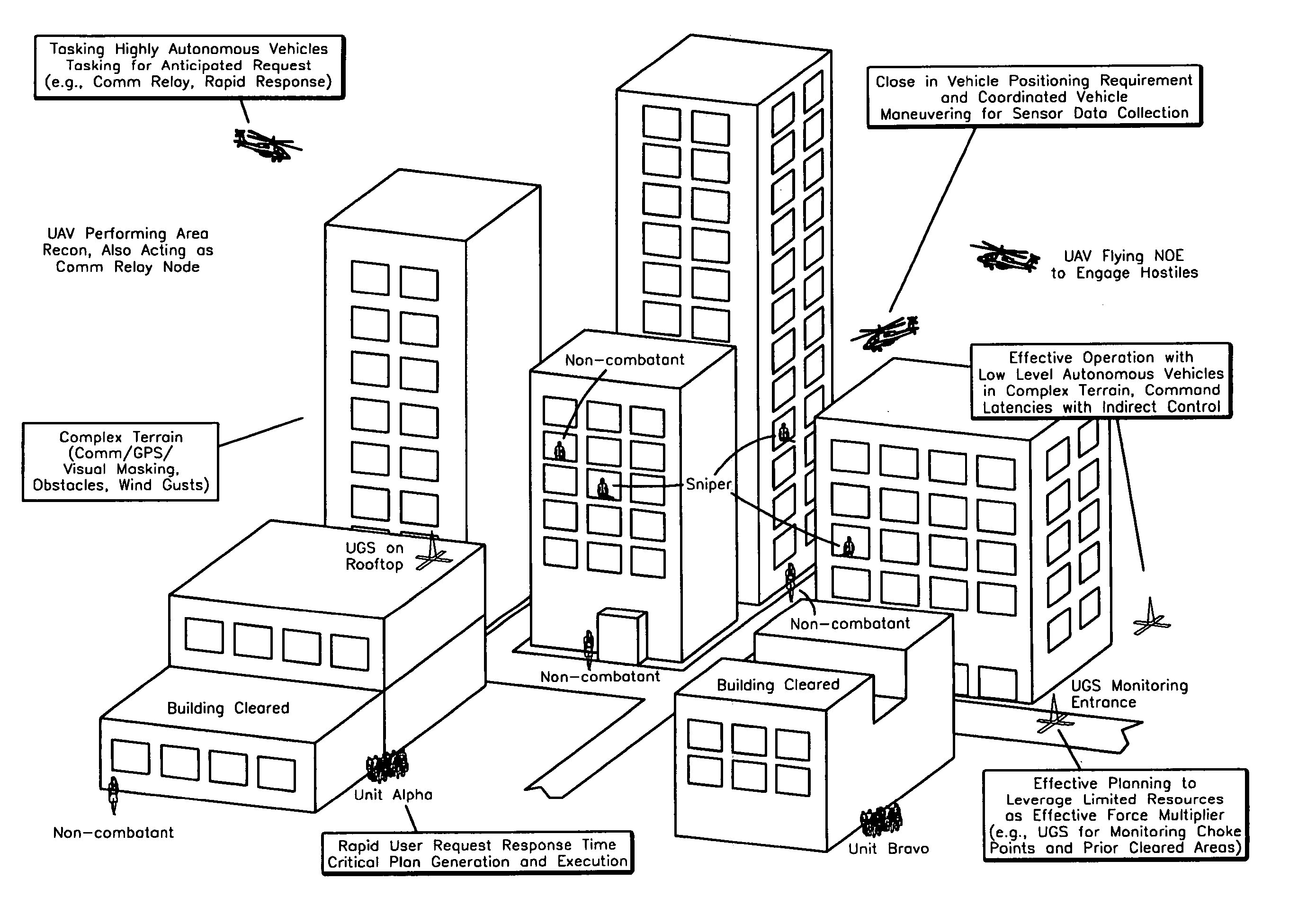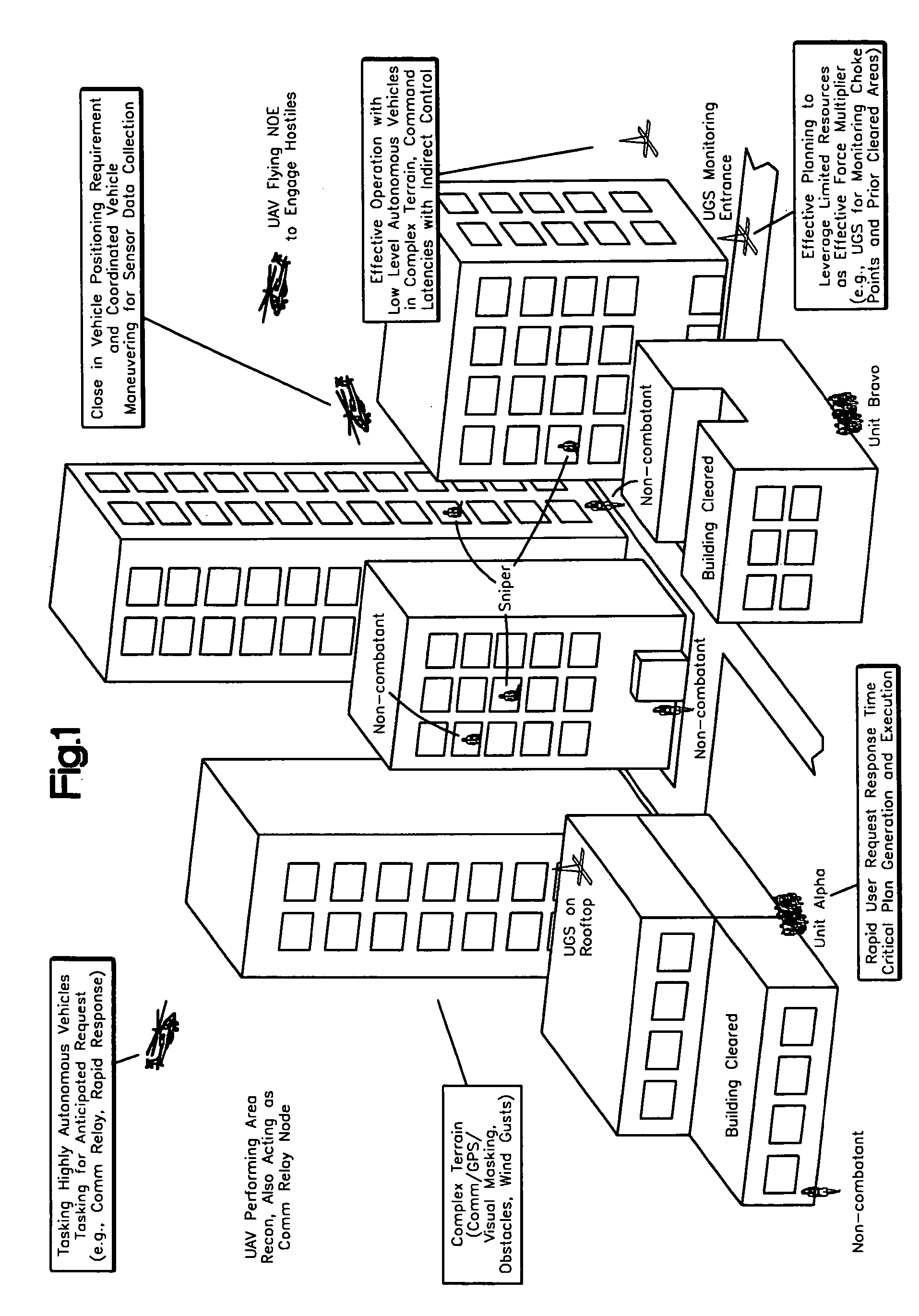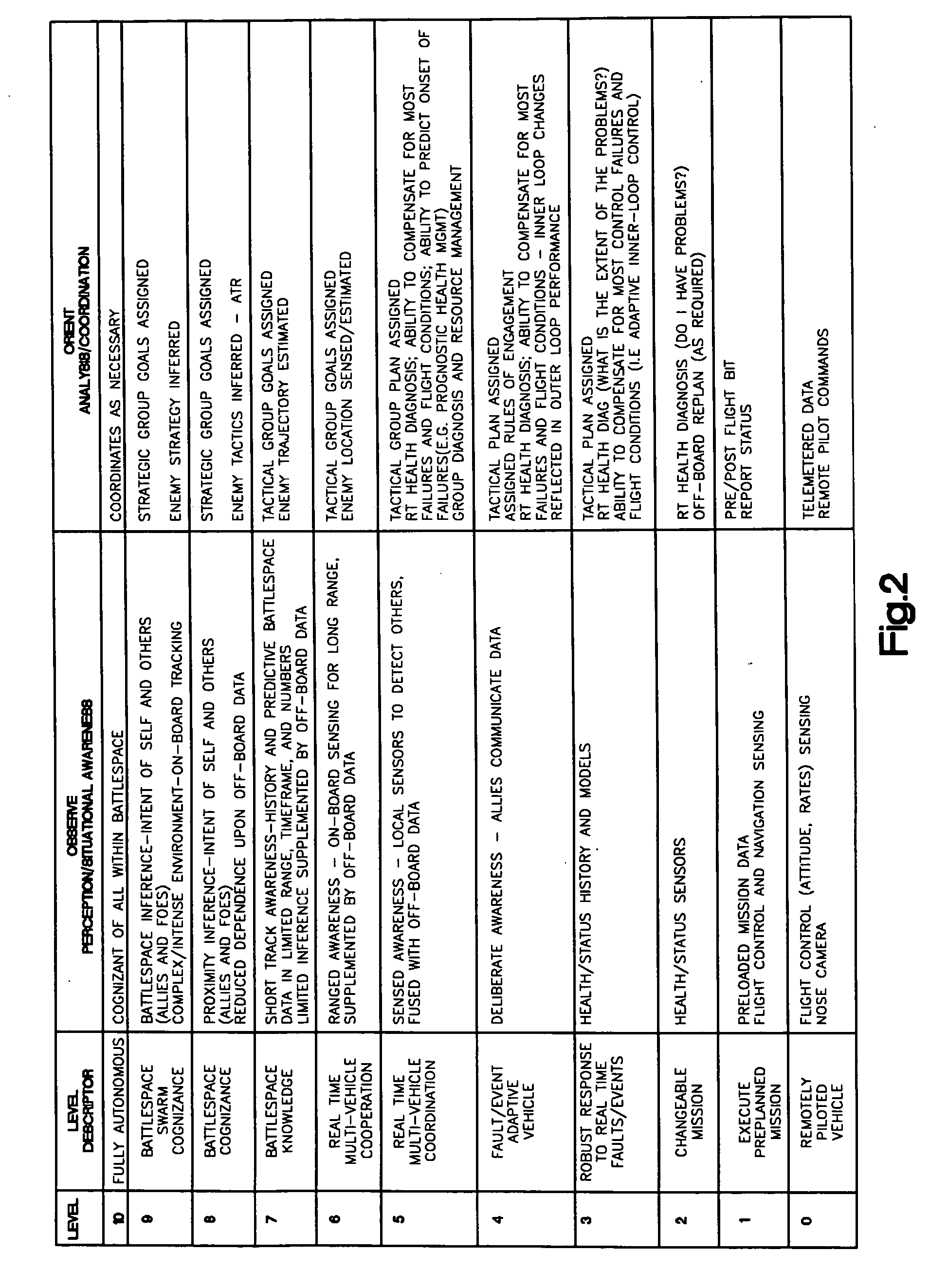Mission planning system for vehicles with varying levels of autonomy
a technology of autonomous driving and mission planning, applied in the field of autonomous commanding and controlling a team of unmanned vehicles, can solve the problems of system downtime, critical decisions of already overloaded human commanders, and a relatively long period of planning
- Summary
- Abstract
- Description
- Claims
- Application Information
AI Technical Summary
Benefits of technology
Problems solved by technology
Method used
Image
Examples
Embodiment Construction
[0015] A system in accordance with the present invention utilizes state-of-the art components for cognitive reasoning and combines these components into a hierarchical planning system that may break apart a mission plan into a plurality of less complex sub-tasks. The system may then execute these sub-tasks based on techniques such as a deliberative method or a swarming method.
[0016] The system may provide mission planning for unmanned autonomous vehicles. The system may include a number of synergistic components designed to provide accurate and efficient resource allocation and dynamic mission planning capabilities for unmanned vehicles with varying levels of autonomy. The system may provide flexibility to a mission and may facilitate recovery when unmanned vehicles are lost or damaged. The system may task each vehicle at it's own level of autonomy thereby enabling each unmanned vehicle, whose capabilities may range from a low-autonomy vehicle to a highly autonomous vehicle, to ope...
PUM
 Login to View More
Login to View More Abstract
Description
Claims
Application Information
 Login to View More
Login to View More - R&D
- Intellectual Property
- Life Sciences
- Materials
- Tech Scout
- Unparalleled Data Quality
- Higher Quality Content
- 60% Fewer Hallucinations
Browse by: Latest US Patents, China's latest patents, Technical Efficacy Thesaurus, Application Domain, Technology Topic, Popular Technical Reports.
© 2025 PatSnap. All rights reserved.Legal|Privacy policy|Modern Slavery Act Transparency Statement|Sitemap|About US| Contact US: help@patsnap.com



